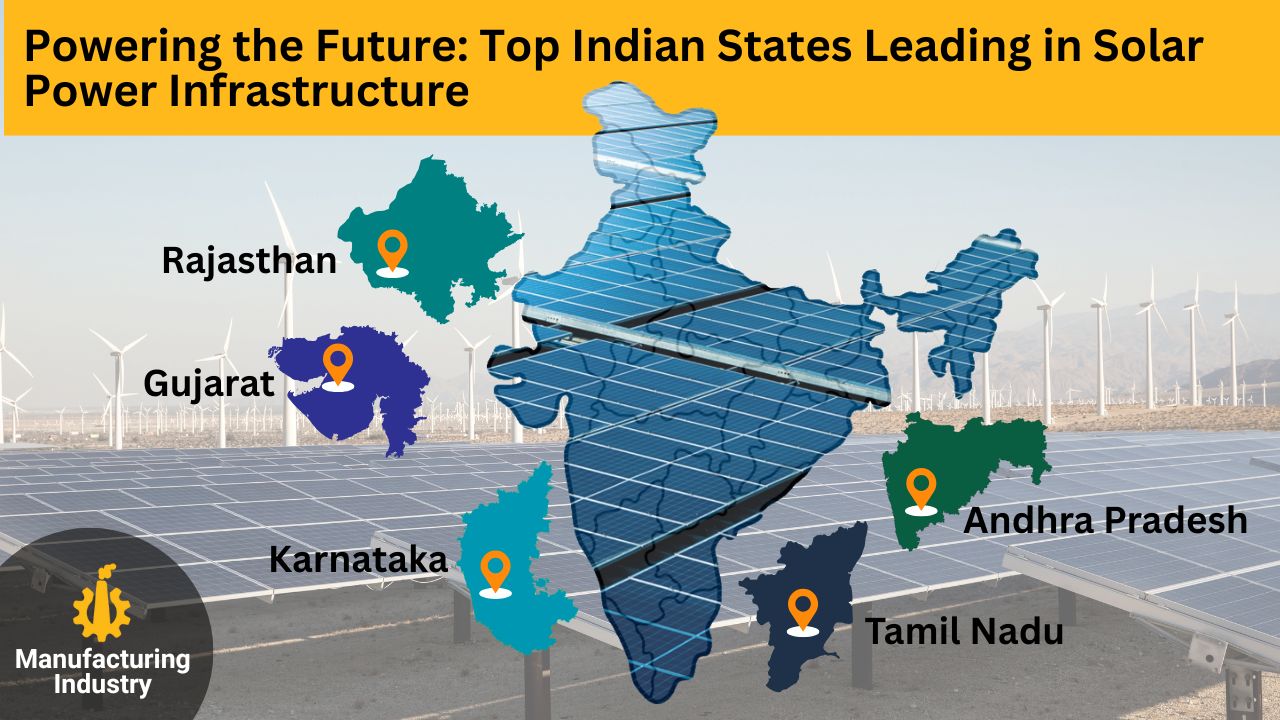
India is making a quick shift to renewable energy with solar energy leading the way. The country is among the highest performers for solar energy production with its vast capability and abundant sunshine—India has positioned itself for solar energy success. However, not all areas are equal with regard to their infrastructure to support solar energy generation equipment. Some states have taken the lead, developing strong ecosystems that target the needs of manufacturers, investors and innovators alike. Here is a roundup of Indian states that are a cut above when it comes to solar power infrastructure.
Gujarat: The Solar Power Pioneer
Gujarat has been the solar energy leader for a long time. The development of the Charanka Solar Park, one of the largest solar parks in Asia, indicates an obvious commitment by the state to build solar energy infrastructure. For these reasons, Gujarat is also a dominant force in developing a robust and stable grid, with supportive policies for solar energy equipment producers. For example, the state government has had a “Solar Energy Policy” and has promoted a favorable land acquisition policy for solar energy in Gujarat. The state’s favorable land for solar energy has made it appropriate for companies to launch manufacturing units with solar energy generation equipment.
Rajasthan: Expansive Land and Sunshine Abundance
Rajasthan’s natural landscape—vast areas of bare land and abundant solar power—makes it one of the states most suited for solar power generation. Rajasthan hosts some of the largest solar parks, like the Bhadla Solar Park, which has become a global symbol of solar capacity and is the third largest solar park in the world. Apart from generation, Rajasthan is succeeding in attracting equipment manufacturers because of state policies, which include subsidized land prices, rebates on electricity tariffs, and tax exemptions. Rajasthan’s solar energy policy of 2019 promotes further investment into solar power generation by streamlining the clearance procedure and supporting the construction of grid infrastructure.
Tamil Nadu: Industrial Base Meets Renewable Ambition
Tamil Nadu has historically been at the forefront of wind energy but now is also witnessing major advancements in solar power as well. This state already has a strong industrial base and an adequate infrastructure in place to manufacture solar panels and inverters. Tamil Nadu has terrific infrastructure in electric power transmission, as well as port access and a skilled workforce to offer attractive prospects for solar equipment manufacturing. The state has announced policies to increase rooftop solar installations and to add solar to an already robust renewable portfolio.
Karnataka: A Hub of Innovation and Green Energy
Karnataka has emerged as a renewable energy leader with its innovative and progressive policies. This state has the Pavagada Solar Park, one of the largest in the world, and is showing the nation and the world the future of solar sustainability and the current capabilities of solar energy and solar energy consumption into the grid. The state supports solar equipment manufacturing through initiatives related to its “Karnataka Renewable Energy Policy.” Moreover, Bengaluru’s tech ecosystem has facilitated innovations related to solar technologies, such as new inverters, battery storage systems and solar tracking systems.
Andhra Pradesh: Accelerating Growth and Supportive Ecosystem
Andhra Pradesh is rapidly advancing in solar with a very favorable business environment and a clearly articulated solar policy vision. The Andhra Pradesh Solar Power Policy outlines clear directions for targeting investment incentives for solar policy and development through capital subsidies, land banks for solar, the fast edge of the bureaucracy land clearing and approvals, and fast paths for obtaining state subsidies and incentives for solar projects. The infrastructure growth of solar parks with plug-and-play facilities has provided a solid foundation for solar power generation and equipment manufacturing. The state is also working in collaboration with private players and central agencies to improve its infrastructure.
Staff Writer
Staff Writer at Manufacturing Industry
Conclusion
The solar success story of India is being developed in these visionary states with the infrastructure, policy support, and natural advantages. For India to reach 500 GW of non-fossil fuel capacity by 2030, states that are well-established in solar capacity will have a critical role to play. These states support solar energy generation while also growing domestic manufacturing—more firmly securing India’s foothold within the global renewable energy marketplace. For investors, manufacturers, and environmental advocates, these are the states to watch and the states to embrace in building a cleaner, greener future.